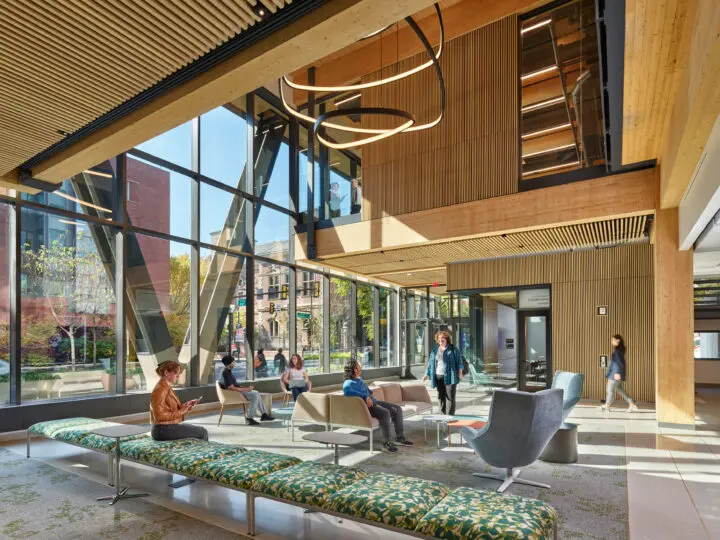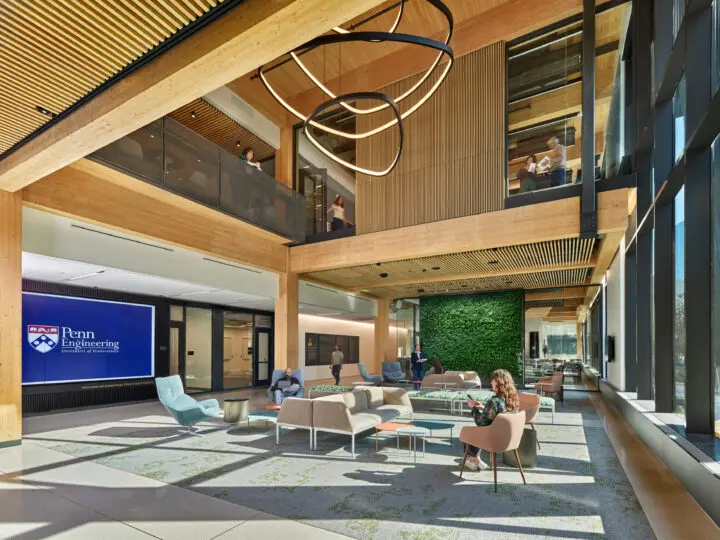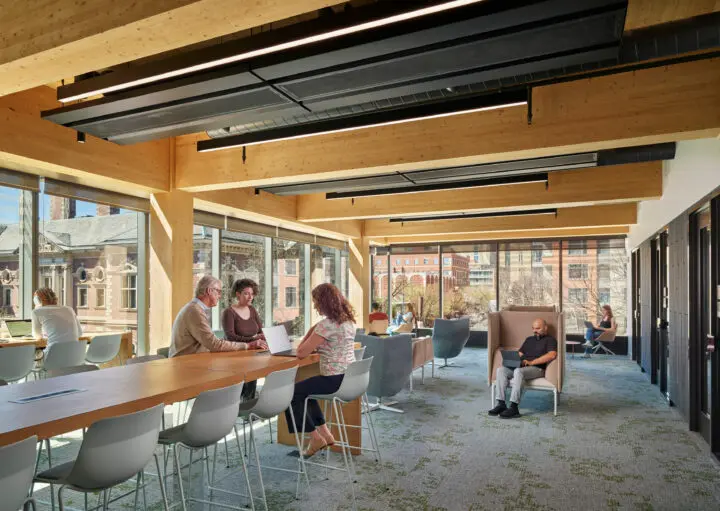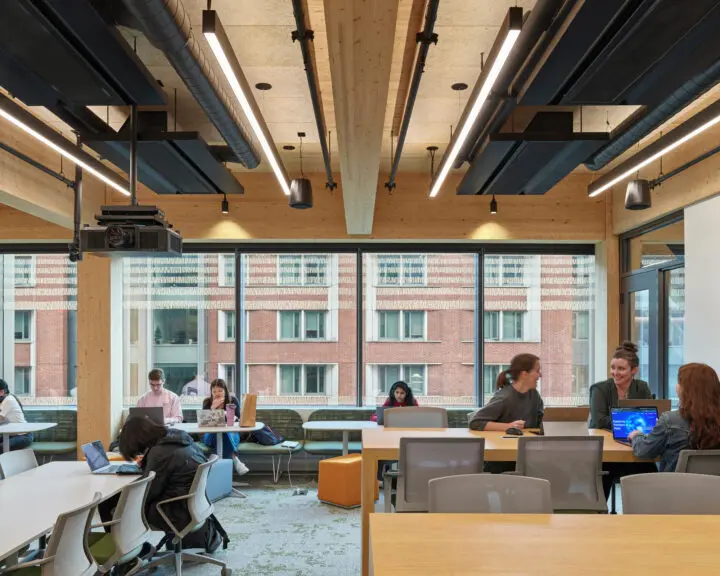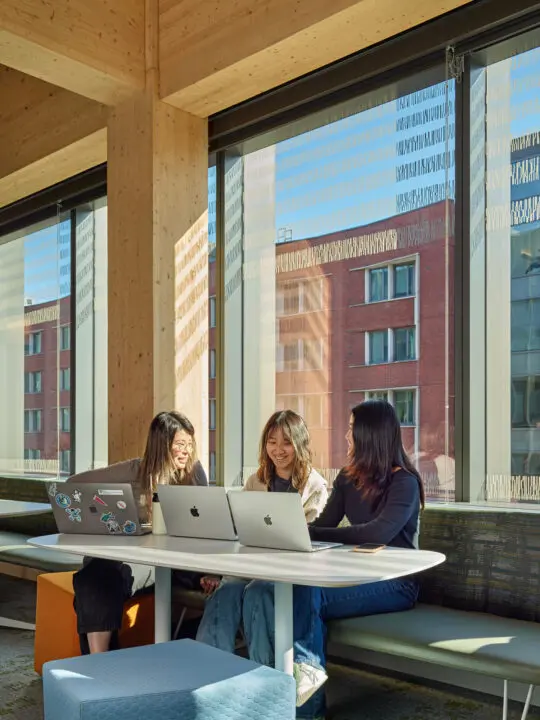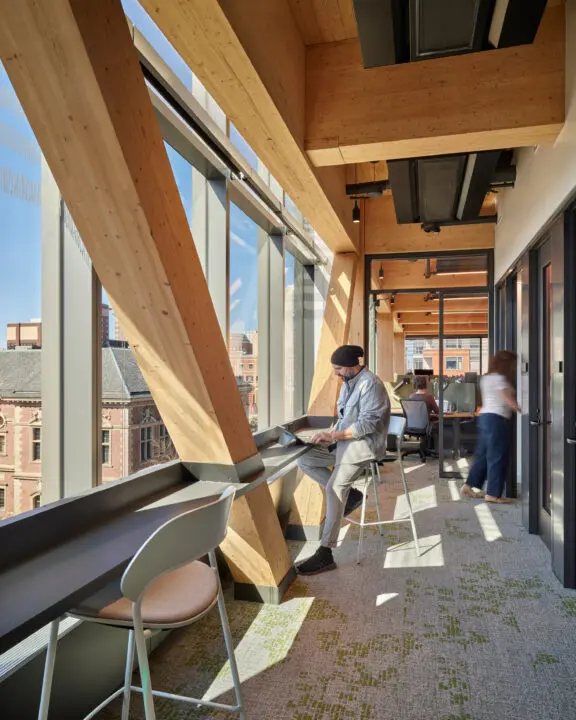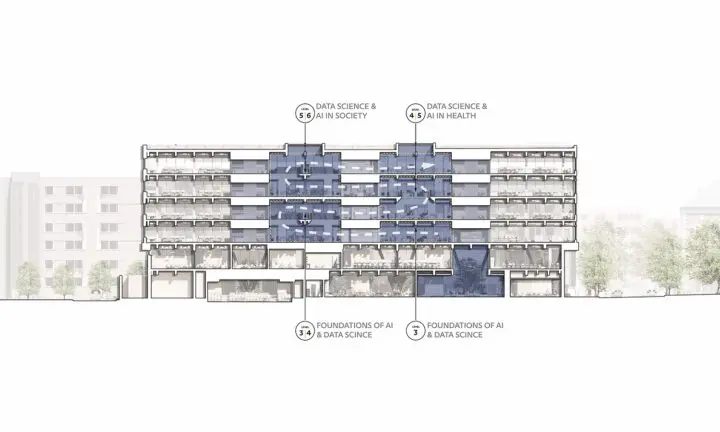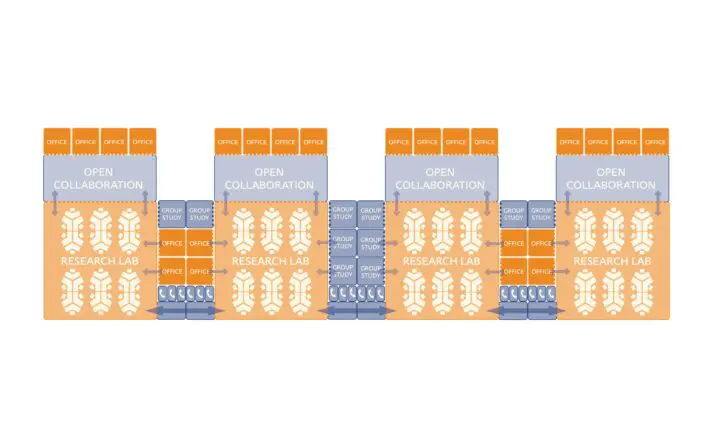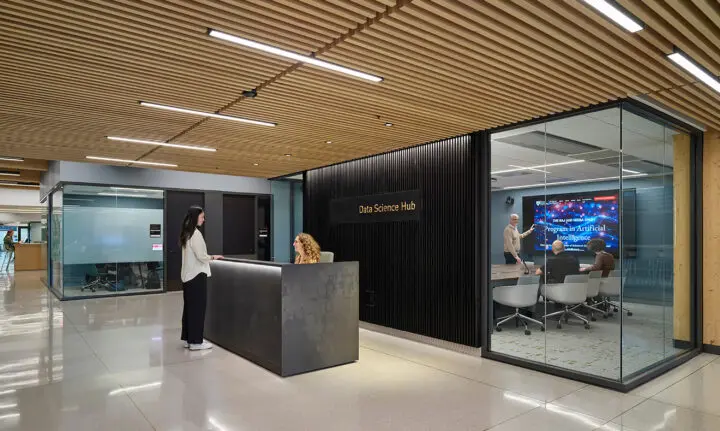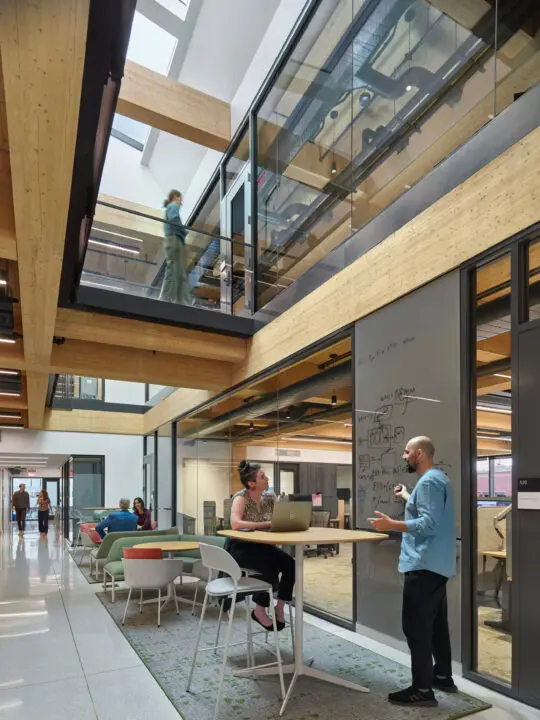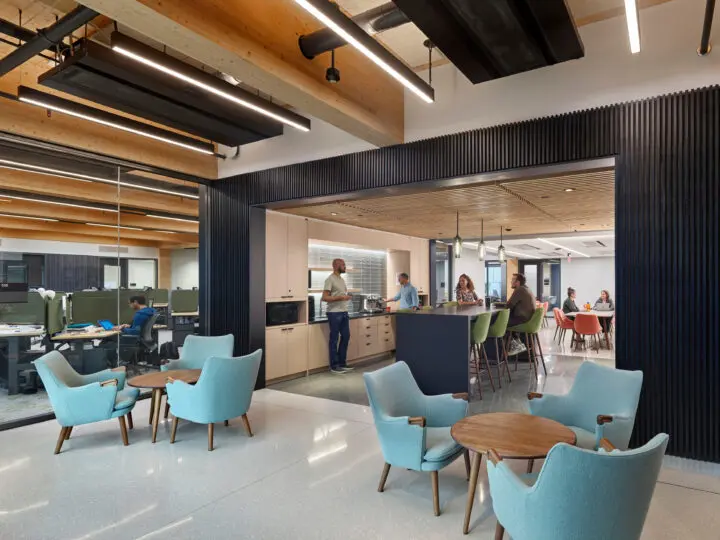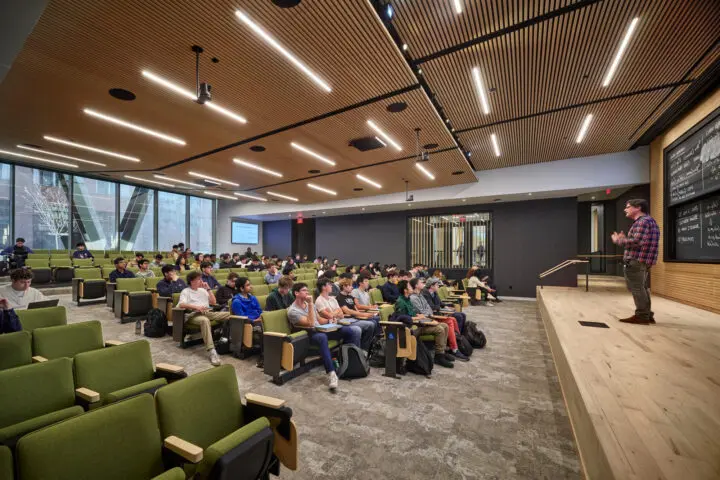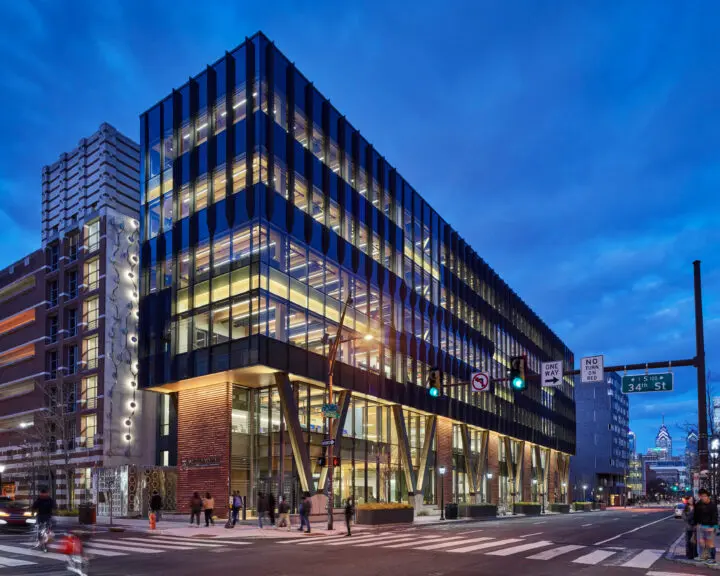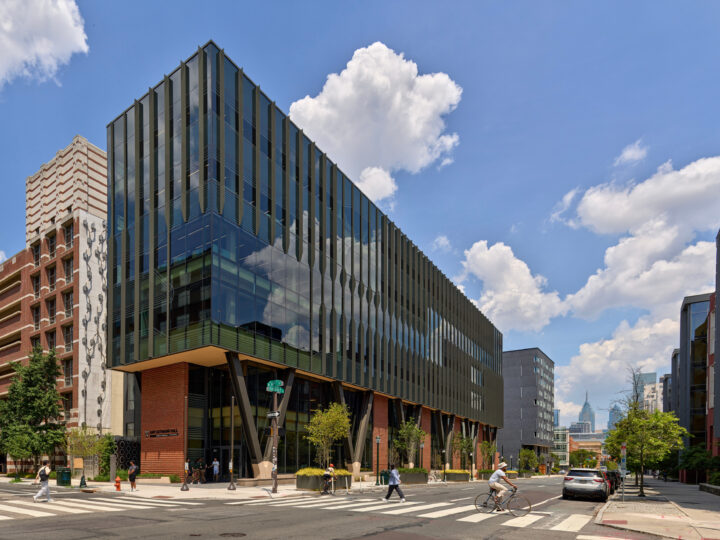
University of Pennsylvania Amy Gutmann Hall
Amy Gutmann Hall is Penn Engineering’s new home for data science and AI. At six stories and 116,000 square feet, the building is the tallest mass timber academic facility on the East Coast. Named for the university’s longest-serving president, Amy Gutmann Hall connects building occupants, who work in a digital realm, back to the natural world—maximizing views and daylight, integrating ecological environments into interior spaces, and incorporating sensory stimuli that encourage collaboration and comfort. The cutting-edge mass timber system significantly reduces the building’s carbon footprint and reinforces its identity as a beacon of innovation.
In collaboration with KSS Architects.
Housing Penn Engineering’s data science research and academic programs, Amy Gutmann Hall is a vibrant and welcoming hub for cross-disciplinary collaborations focused on harnessing the power of data and AI. The facility houses three floors of teaching labs, active learning classrooms, and collaboration spaces as well as three floors of research centers. The ground floor serves as a home base for data science and AI programming with a gracious student commons and a quiet reading room, collaboration spaces, and a large lecture hall.
At Penn, our spaces show our values to the world. The very construction of Amy Gutmann Hall embodies Penn’s values and commitment to sustainability and wellness. Its novel construction using mass timber, a sustainable, yet remarkably resilient material, sets it apart from any before it at Penn or in the City of Philadelphia. Inside the building, the warmth of the exposed wood creates a welcoming environment for our community, inspiring us to even greater levels of creativity and imagination.Vijay Kumar
Nemirovsky Family Dean of the School of Engineering and Applied Science
The building’s sustainable design features include a high-performance envelope, which reduces the building’s energy consumption by nearly 20%. Low-flow plumbing fixtures reduce indoor water usage by 33%. High-performance windows and skylights provide balanced daylighting, with more than 77% of regularly occupied spaces offering views to nature. The frit pattern on the curtain wall, designed in collaboration with Andrew Kudless of Matsys, marries biomorphic patterns with computational design, further reinforcing the building’s identity.
The upper three floors are organized into large, flexible “neighborhoods” of 35-40 researchers, each linked to adjacent labs through shared collaboration zones. Small, open kitchenettes are strategically positioned throughout the research zones to bring researchers together for informal, serendipitous conversations that foster community and support a shared sense of vibrancy and innovation. A larger kitchen and break room, located on the fifth floor, serve the entire research community and host community events.
For some, the terms data science and artificial intelligence conjure images of people focused on computer screens and manipulating lines of code, but for [Amy Gutmann Hall], the architects Lake Flato with KSS envisioned an environment where people would instead engage with each other.Joann Gonchar
Architectural Record
Early & Integrated Mass Timber Procurement
To control costs and minimize risk, Lake Flato advocated for the early engagement and procurement of mass timber, MEP, fireproofing, and curtainwall contracts. In close collaboration with Gilbane Construction, Lake Flato designed the early procurement process, subcontractor selection, and systems integration. The increased clarity and integration created by this innovative approach contributed to the project coming in three months early and $500,000 under budget.
University of Pennsylvania Amy Gutmann Hall
Consultants
- Architect of Record & Design Architect: Lake Flato Architects
- Associate Architect: KSS Architects
- Landscape Architect: Ground Control
- Structural & MEP: Buro Happold
- Biomimicry Computational Designer: Matsys
- Lab Planner: RFD
- Envelope Consultant: RWDI
- Timber Vendor: Nordic
- General Contractor: Gilbane
- Photography: Jeffrey Totaro
Awards
- 2025 AIA New Jersey Honor Award
Publications
- 2025 Architectural Record
- 2025 The Architect's Newspaper
- 2025 Building Design + Construction
- 2025 i+s
- 2025 Archello
- 2025 Archilovers
- 2025 Rethinking the Future
- 2025 WoodCentral
- 2024 Philadelphia Business Journal
- 2024 Penn Today
- 2024 The Daily Pennsylvanian
- 2023 Construction Equipment Guide
- 2023 Bisnow
